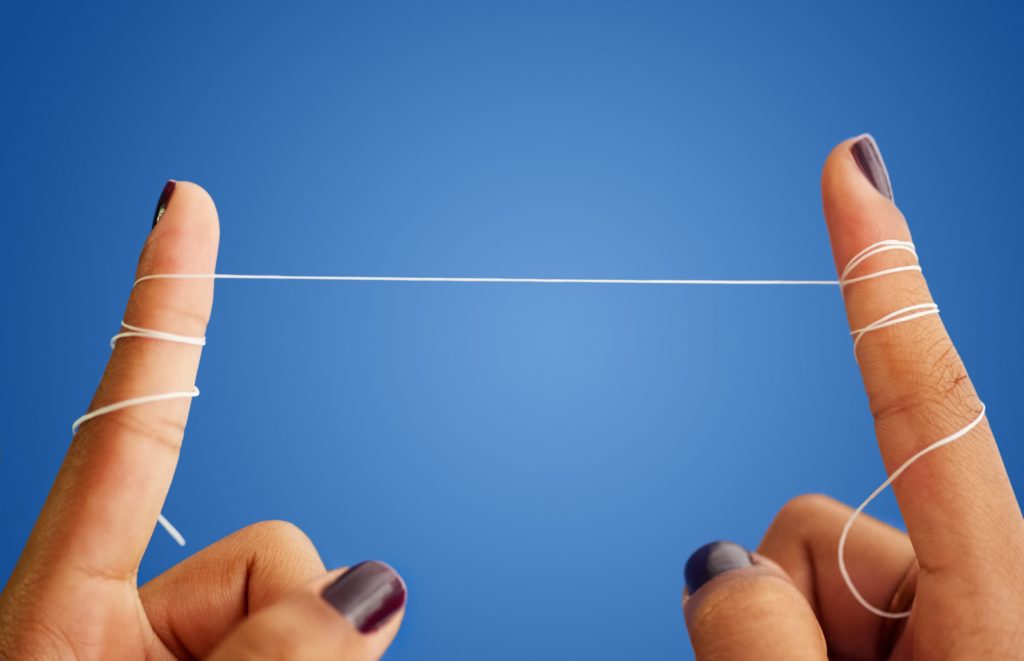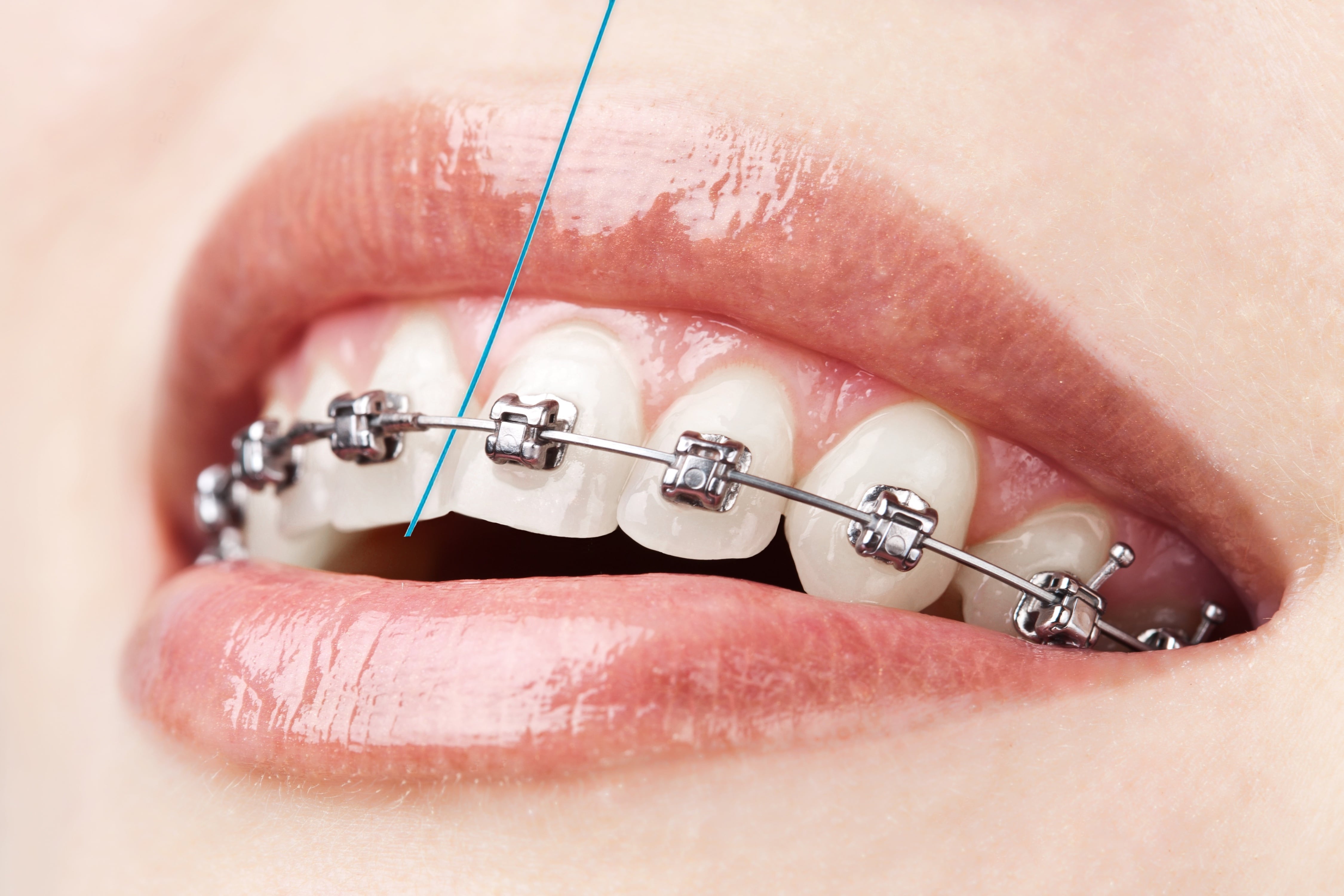Flossing is a lot like doing abs exercises: both are incredibly beneficial, but people don’t like them. A large study conducted by the CDC in the US in 2016 found that only 30% of adults floss daily. Other studies around the world have found similar (or even lower) numbers.
This is really unfortunate, considering the incredible rewards of building a healthy flossing habit: healthier teeth and gums and fewer dental expenses down the road.
How to floss correctly: a step-by-step guide
Here’s how to floss correctly. It’s best to floss using a mirror to start if you’re not a regular flosser.

The idea is to use a clean piece of floss, about 1 to 2 inches wide, to floss between each pair of teeth. This will remove the most bacteria.
- Start with a length of floss about 18 to 24 inches long.
- Beginning at one end of the string, wind a section of floss around both of your index or middle fingers.
- Holding the floss over your thumbs so that it’s secure and has good tension, ease the floss gently back and forth between your teeth until it reaches your gums. Don’t “snap” the floss into your gums, as that may scratch them.
- Bend the floss into a “C” shape around the base of each tooth, and slide it up and down. Go gently between the teeth and gums this way: don’t saw aggressively back and forth.
- Gently ease the floss back out from between your teeth.
- Move to the next 1 to 2-inch section of floss, and repeat the steps for the next pair of teeth.
- Don’t forget to floss the back surfaces of all four of your back teeth.
Don’t reuse floss even if you rinse it. Once floss has been used, it’s coated in bacteria and reusing will spread the bacteria instead of getting rid of it.
How to floss with braces
If you are using Invisalign, all you need to do is remove the aligner and floss according to the instructions above.
If you have metal braces with a wire connecting them, there will be an extra step to get the floss past the wire. You can do this with or without a floss threader, although many people find a floss threader helpful.

Follow these steps:
- Loop your floss through the end of your threader, and bend the threader into a curve to improve how it handles in your mouth.
- Insert the floss through the wire, going away from the gums and towards the chewing surface of the teeth. This prevents you from poking your gums with the threader.
- Once the floss is past the wire, wind a section of floss around your index fingers, and floss between the teeth as per the instructions above.
- Remove the floss, and go to the next pair of teeth and the next section of floss.
This will take time at first but will get faster with practice.
FAQ
Why should I bother flossing?
It’s not just about removing particles of food that are stuck between your teeth. Flossing helps remove that sticky yellow film, called plaque, from just below the gumline, where tooth brushes can’t reach.
Plaque is made up of colonies of bacteria that damage your teeth and gums. If left to grow, plaque hardens into tartar in 24 to 36 hours; at this point it can only be removed by a hygienist during a professional dental cleaning—and meanwhile the damage keeps happening. The bacteria in plaque release an acid that eats away at the enamel of your teeth (the hard outer layer).
In a nutshell, flossing helps prevent cavities, gum disease, and even bad breath.
How often should you floss?
Definitely floss daily, ideally just before you go to bed so that plaque isn’t in your mouth overnight. But if your evenings are too hectic, flossing in the morning is fine. The important thing is to make sure that you floss at least once every 24 hours.
You can also floss twice a day, or even after every meal. Just be sure that you’re gentle every time you floss.
Should I brush or floss first?
While many people brush, floss, and then rinse with mouthwash, there have been some new studies that show that flossing first is more effective.
If you floss first, any plaque that’s been loosened and left in your mouth will be removed by brushing. But again, the most important thing is that you do both.
If you prefer to have your mouth clean of food debris before flossing, it can help to rinse your mouth with water first.
What causes gums to bleed when flossing?
If you haven’t flossed for a long time, your gums may bleed a bit for the first few days of flossing, even if you’re gentle. It’s very common and as long as it stops quickly and isn’t too severe, it’s harmless—it just means you need to floss more often.
If the bleeding hasn’t stopped after a couple of days of flossing, definitely see your dentist. There are many possible causes of bleeding gums, including mild and serious gum disease, vitamin C deficiency, smoking, diabetes, and other medical conditions. It’s important that your dentist has a chance to have a look, and then they may recommend you see your doctor.
What about alternatives to string floss?
The best floss to use is unwaxed and unflavoured. Recent studies have shown that wax and additives can leave deposits around the gums and cause inflammation.
There are also some wonderful and complementary tools, including the water flosser. Different products can be added to the water, depending on your dentist’s and hygienist’s recommendations.
Interproximal brushes can also be helpful when the gums have receded. These brushes come in different sizes to best suit the spaces to be cleaned.
Another great tool is the tongue scraper. Tongues harbour a large percent of overall oral bacteria, and the tongue scraper will greatly help control this.
Tips for building a healthy flossing habit
Building healthy habits takes time. Here are some tips to help you get into a positive routine.
- Decide on the best time of day to floss, then set a reminder on your phone if you tend to be forgetful.
- Listen to music or a podcast while you floss to ensure you’re taking enough time to do it thoroughly.
- Once you’ve got the hang of the technique, and can floss every tooth without looking in a mirror, you can watch a video while you floss.
In no time at all, you’ll get the hang of it.
